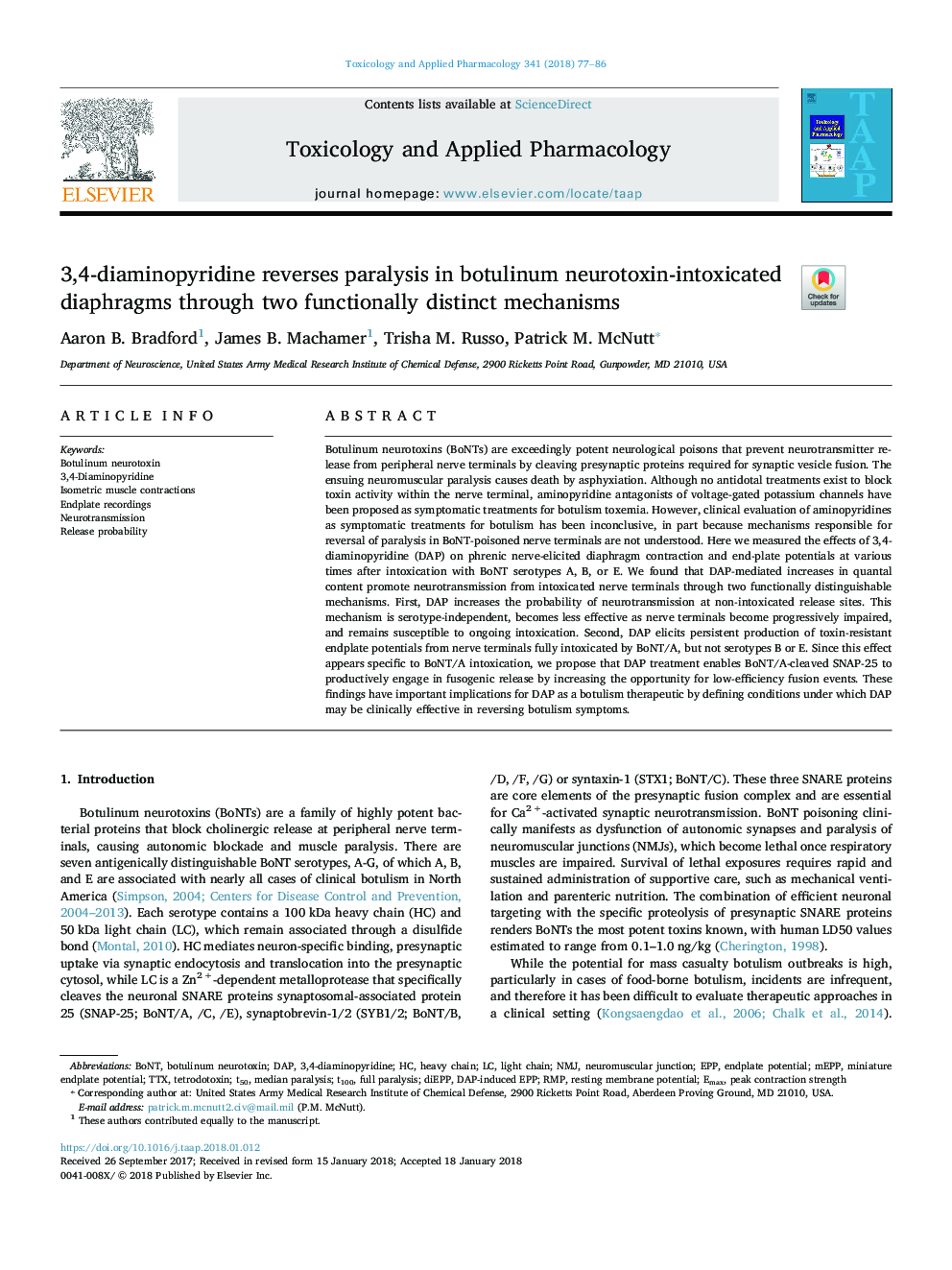| کد مقاله | کد نشریه | سال انتشار | مقاله انگلیسی | نسخه تمام متن |
|---|---|---|---|---|
| 8538845 | 1561121 | 2018 | 10 صفحه PDF | دانلود رایگان |
عنوان انگلیسی مقاله ISI
3,4-diaminopyridine reverses paralysis in botulinum neurotoxin-intoxicated diaphragms through two functionally distinct mechanisms
ترجمه فارسی عنوان
3،4-دیامینوپیریدین فلج را در دیافراگم های مضر نوتروکسین بوتولینیوم از طریق دو مکانیسم متمایز عملکرد
دانلود مقاله + سفارش ترجمه
دانلود مقاله ISI انگلیسی
رایگان برای ایرانیان
کلمات کلیدی
DAPt100t50mEPPEmaxBoNTRMPNMJTTXEPP3,4-diaminopyridine - 3،4-دیامینوپیریدینNeuromuscular junction - اتصال عصبی عضلانیRelease probability - احتمال آزاد شدنNeurotransmission - انتقال عصبیtetrodotoxin - تترو دوتوکسین light chain - زنجیره سبکheavy chain - زنجیره سنگینBotulinum neurotoxin - نوروتوکسین بوتولینومminiature endplate potential - پتانسیل اندیکاتور مینیاتوریresting membrane potential - پتانسیل غشای استراحتendplate potential - پتانسیل پایان دادن به
موضوعات مرتبط
علوم زیستی و بیوفناوری
علوم محیط زیست
بهداشت، سم شناسی و جهش زایی
چکیده انگلیسی
Botulinum neurotoxins (BoNTs) are exceedingly potent neurological poisons that prevent neurotransmitter release from peripheral nerve terminals by cleaving presynaptic proteins required for synaptic vesicle fusion. The ensuing neuromuscular paralysis causes death by asphyxiation. Although no antidotal treatments exist to block toxin activity within the nerve terminal, aminopyridine antagonists of voltage-gated potassium channels have been proposed as symptomatic treatments for botulism toxemia. However, clinical evaluation of aminopyridines as symptomatic treatments for botulism has been inconclusive, in part because mechanisms responsible for reversal of paralysis in BoNT-poisoned nerve terminals are not understood. Here we measured the effects of 3,4-diaminopyridine (DAP) on phrenic nerve-elicited diaphragm contraction and end-plate potentials at various times after intoxication with BoNT serotypes A, B, or E. We found that DAP-mediated increases in quantal content promote neurotransmission from intoxicated nerve terminals through two functionally distinguishable mechanisms. First, DAP increases the probability of neurotransmission at non-intoxicated release sites. This mechanism is serotype-independent, becomes less effective as nerve terminals become progressively impaired, and remains susceptible to ongoing intoxication. Second, DAP elicits persistent production of toxin-resistant endplate potentials from nerve terminals fully intoxicated by BoNT/A, but not serotypes B or E. Since this effect appears specific to BoNT/A intoxication, we propose that DAP treatment enables BoNT/A-cleaved SNAP-25 to productively engage in fusogenic release by increasing the opportunity for low-efficiency fusion events. These findings have important implications for DAP as a botulism therapeutic by defining conditions under which DAP may be clinically effective in reversing botulism symptoms.
ناشر
Database: Elsevier - ScienceDirect (ساینس دایرکت)
Journal: Toxicology and Applied Pharmacology - Volume 341, 15 February 2018, Pages 77-86
Journal: Toxicology and Applied Pharmacology - Volume 341, 15 February 2018, Pages 77-86
نویسندگان
Aaron B. Bradford, James B. Machamer, Trisha M. Russo, Patrick M. McNutt,
